|
From January 1, 2019 to March 1, 2019, I will be accepting submissions for an anthology of optimistic science fiction stories set in winter—specifically, solarpunk stories, which means stories that engage with climate change, renewable energies, or other environmental issues through an optimistic lens. This will be a followup to my anthology Glass and Gardens: Solarpunk Summers, which took the same approach for stories set in summer. To break it down, the story must be:
Beyond those criteria, I'm open to a wide range of interpretations of the prompt. The Solarpunk Summers anthology was quite varied, and I want this one to be as well. If you have an idea that might fit, then I hope you'll let me see it, However, if you want some insight into specifically what I'm looking for, or need some prompts to get rolling with an idea, check out my wish list below. To submit a story to Glass and Gardens: Solarpunk Winters, send it as an attachment, with a brief cover letter in the body of the email, to solarpunk[at]worldweaverpress[dot]com. Stories up to 8,000 words will be considered, and we will pay $0.01 per word. Please submit only between January 1 and March 1, 2019 unless an extension has been posted on the World Weaver Press website and social media. The full guidelines may be found here: www.worldweaverpress.com/submit-anthologies.html Migration A couple of my cousins recently decided to sell their home, quit their jobs, homeschool their kids, and travel the country in their RV full time, working a few seasonal jobs to support themselves. They made this radical lifestyle change because they recognized the absurdity of working long hours at a job you hate to pay for a house you hardly stay in and to support a family you never see. This strikes me as a very solarpunk thing to do (though it would be more so if the RV were fully electric), and possibly even a precursor to the "walkaway" culture depicted in Cory Doctorow's cyberpunk/solarpunk novel. Imagine a world where this kind of migratory lifestyle was more common, perhaps even necessary, where cities are uprooted and the roads become the real communities. Imagine fleets of solar-powered RVs, caravans sharing a portable wind turbine, highways built to both maximize travel and minimize damage to the land and wildlife. That's one type of migration, but maybe in a solarpunk future people will migrate the way animals do, going north in the summer to escape intense heat and south in the summer to escape extreme cold. (Or vice versa for the southern hemisphere.) What can we learn about the migration patterns of animals that can make our own living circumstances more adaptable to the changing planet? Consider also the Kasita concept: a "portable, stackable studio apartment" that can be slid out of its apartment "rack" and moved as a whole to a different "rack" in a different location. (See what I'm babbling about here.) Who might live in this kind of a place, and where would they be moving to? Snow Sometimes people assume that "global warming" will mean there is no more snow and ice, but in some locations, it's likely to have the opposite effect, leading to more extreme blizzards. Higher global temperatures mean more water vapor in the air, which can lead to heavier snowfall. Warmer lakes may not freeze as early as they used to, leading to more lake effect snow as cold air blows across their surface. The loss of arctic sea ice may actually be making winters longer, because of the weakening of the polar vortex that used to keep arctic air trapped northwards. So do your research about what the future of winter might actually look like. I don't need every story to look like a snow globe, but I will look skeptically at ones that just assume snow is a thing of the past. Wet Season/Dry Season I'm well aware that many places in the world don't have "winter" and "summer" per se, but rather a wet season and a dry season, and the timing of those seasons varies immensely depending on the local climate. I'm interested in seeing interpretations of "winter" that correspond to local climates and investigate the unique challenges those particular locations will face under climate change. If your story is set in the northern hemisphere between November and March, or in the southern hemisphere between May and September, and the weather or climate plays a role in your story, then that counts as winter as far as I'm concerned. Winter Holidays I'm open to a solarpunk Christmas story—maybe something that addresses a more sustainable way of harvesting/disposing of Christmas trees?—or a solarpunk Hanukkah story—maybe a retelling about a solar array that should only be enough to power one city block, yet powers eight?—but I'm also very interested in stories that feature any or all the other winter holidays: Yule, Diwali, Kwanzaa, Chinese New Year, Shab-e Yalda, etc. The world is large, and there are many festivals that celebrate light in the darkest time of the year. Or perhaps your solarpunk society will create a new winter holiday? Geothermal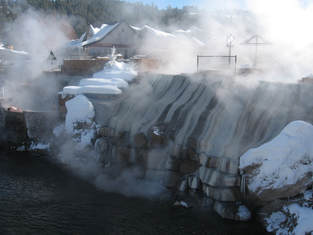 When I think of solarpunk winters, I picture places like Pagosa Springs, a Colorado mountain town where food is grown year-round in geodesic domes that are heated by the same geothermal hot springs that allow you to float in 100 degree pools while snow falls around you. How can we safely and sustainably harness the Earth's own heat to keep ourselves warm? What kind of a story might take place in a futuristic wintry hot springs? AntarcticaI saw a climate change map recently which predicted that when the world is 4 degrees warmer, the ice on Western Antarctica will be completely melted and that land will be covered in large cities. Similar ideas were proposed way back in the early 20th century, imagining domed cities in Antarctica. Either of these seems like a fascinating setting for a solarpunk story. What are cities like in a future Antarctica? And even if conditions are pleasant during the summer, how do the people there deal with the long nights of winter? Then, of course, there's the issue of what gets revealed when the ice melts. Cities of ancient monsters (a la At the Mountains of Madness); buried alien ships (a la The Thing); the lost city of Atlantis. All of these ideas have been done before, but you can put a fresh spin on them by considering them through a solarpunk lens. Indigenous Futurism 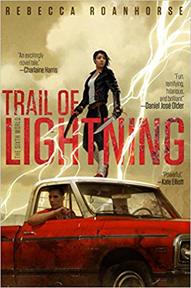 In Trail of Lightning by Rebecca Roanhorse, energy wars leave the country vulnerable and a massive earthquake splits the continent in half, but this apocalypse is actually a rebirth for the Navajo Nation in New Mexico and Arizona, partly because they wall themselves in, partly because they already know how to survive without modern conveniences, and partly because "the Diné had already suffered their apocalypse over a century before." In Binti by Nnedi Okorafor, a Himba girl's desire to go to space clashes with her duties to her family and her tribe's culture, but it's that very culture that makes her the best person to negotiate with the aliens who attack her spaceship. In "Xibalba Dreams of the West," Brazilian author André S. Silva imagines the Americas as a network of high tech and sustainable Indigenous societies that were never colonized by Europe, and who are now confronting the end of the Mayan calendar. Indigenous futurisms often show typical science fiction tropes through the lens of traditional beliefs and folklores, and push back against the colonialism that sci-fi often just takes for granted. Indigenous futurism, Afrofuturism, and other similar movements center the experiences of people of color and bring fresh perspectives to a genre that can sometimes tend toward homogeneous or white-washed views of the future. I would love to see some of these perspectives in the Solarpunk Winters slush pile. If your story references a particular cultural practice or traditional story, please feel free to mention that in the cover letter so I can consider it within the correct context. QueernessOne of the few negative reviews that Glass and Gardens: Solarpunk Summers received said that in some of the stories, "homosexuality felt thrown into the story, not to benefit the story or enhance the character, but more, it seemed, as a cheap ploy to get more people to read." In another location, this same reviewer rants for an entire paragraph about why bisexuality shouldn't even be mentioned if the female character ends up with a "guy" instead of a "woman." In the story being referenced there, the character actually ends up with a nonbinary person, but that was clearly so far beyond the reader's comprehension they couldn't even process it. I'm fairly certain this reader gave up on the book in the middle of another story that featured a nonbinary character with zie/zir pronouns. I hold strong to the belief that queer characters can simply exist in a story without being there as a teaching tool for cishet readers or as some kind of metaphor. A story doesn't have to be about queerness to include queer characters. Queerness in science fiction can "benefit the story" simply by depicting a future where queer people can live lives not entirely defined by their queerness, where they are not marginalized or presented as "other". A solarpunk future, especially, must be inclusive, and mentioning a character's bisexuality or transness just as a passing fact can help normalize queerness for readers and lead us toward that more inclusive future. I'm proud of the subtle queerness of Solarpunk Summers (which, incidentally, I never tried to use as a marketing angle), and I'd like to repeat that in Solarpunk Winters. I'm fine with the depiction of cishet characters and relationships as well--Solarpunk Summers featured a number of them. It's not a romance anthology, so I don't explicitly need to know the preferences of all of your characters. But please do feel free to send me stories with gay characters, trans characters, asexual characters, characters who use neo pronouns, etc., and let these characters be as overt or as subtle about those queer traits as the story demands. Additional Recommended Resources
2 Comments
 Joanne Merriam is the publisher of Upper Rubber Boot Books, a fantastic independent publisher who has brought you amazing books such as Sunvault: Stories of Solarpunk and Eco-Speculation and Choose Wisely: 35 Women Up to No Good. Now Joanne is running a Kickstarter to get two new anthologies off the ground. Broad Knowledge features a story by my good friend and Clarion classmate Vida Cruz, as well as stories by Wendy Nikel and Aimee Ogden, two authors I've been lucky enough to work with through World Weaver Press. Sharp and Sugar Tooth looks pretty awesome too, featuring some familiar names that always deliver amazing stories: Catherynne M. Valente, Alyssa Wong, Damien Angelica Walters, Caroline M. Yoachim, and many others. Check out my interview with Joanne Merriam, and then support the Kickstarter here: https://www.kickstarter.com/projects/1431077765/135809732?ref=489967&token=55a135c1  Sarena Ulibarri: Your description for these anthologies says they focus “on ‘bad’ women, and ‘good’ women who just haven’t been caught yet.” This reminds me of that famous quote about “well-behaved women rarely make history.” What made you want to publish stories about this kind of character? Joanne Merriam: That description is defining ‘good’ and ‘bad’ in reference to what we expect women to be, and I’m really fascinated by social expectations and how people structure their lives to adhere to or challenge them. The women in these anthologies appear to be doing everything ‘right’ while getting their own way, or decide they won’t be held back by others’ expectations, or, tragically, try to adhere to or challenge expectations and pay a terrible price for it. I hope that the breadth of stories will collectively show different ways of being, and open up a mental space for thinking about their own options for our readers (whether or not they’re women), in addition to entertaining them. SU: Can you give a couple of teasers about some of the stories we’ll find in BROAD KNOWLEDGE and SHARP & SUGAR TOOTH? JM: Broad Knowledge includes a scientific paper written by a researcher who contracts Innsmouth Fish-man Syndrome, an article for biblical scholars on a seraph’s visit to Earth, an in-depth ethical discussion for journalists covering a woman who has been quarantined on a military base so her ideas don’t spread to the general population, and a series of newspaper headlines and excerpts covering the invention of time travel—but the story that’s probably the most fun, and also possibly the darkest, is “Mary in the Looking Glass,” about the legendary horror figure Mary Whales, and her ex-lover. Sharp & Sugar Tooth features the ritual consumption of funerary meat, poison as a replacement for war, chefs who heal society one meal at a time, alien biomes which entirely consume their hosts, and women turning into chocolate, honey, pastry, fish food, and apple-bearing trees. I’m particularly taken with Jasmyne J. Harris’ “What the Bees Know About Discarded Girlish Organs,” in which part of romance is being eaten by your partner, and what happens when people split up before the process is completed. It’s really haunting. SU: You are editing BROAD KNOWLEDGE, while SHARP & SUGAR TOOTH is being edited by Octavia Cade. Did the two of you take different approaches to curating these books? JM: Yes, I think so. Octavia is quite brilliant! She struck me as very deliberate and careful and thoughtful about how she structured the book, both in selecting stories and in ordering them, to fit a kind of overall narrative arc. I took a more topic-oriented approach to ordering, and am perhaps not as smart, but I’m always saved by the amazing writers who send in their stories and make me look really good as an editor. SU: How do these two anthologies differ from CHOOSE WISELY, the first anthology you did of “Women Up to No Good”? JM: The main difference is the theme, of course: Choose Wisely is all about choices, while Broad Knowledge is about (you guessed it) knowledge, and Sharp & Sugar Tooth about food and consumption. They are also more diverse: Choose Wisely has more white authors, and more Americans, than either of these anthologies, and that’s reflected in the stories in these anthologies being more varied and reflecting more of our world. SU: You have some excellent writers lined up in these two anthologies. As an editor/anthologist, how do you go about reaching out to writers to ensure a diverse table of contents? JM: I use social media extensively to reach communities I’m not a part of. For calls for submissions, I post, where appropriate, on the FB groups Call For Submissions; Calls for Submissions (Poetry, Fiction, Art); Open Call: Science Fiction, Fantasy & Pulp Markets; Open Submission Calls for Horror/Paranormal/Mystery/SciFi Writers; Call For Submissions : QUILTBAG; Asian Science Fiction & Fantasy; Feminist Science Fiction; The State of Black Science Fiction; Women of Color Writers' Community; and WOMPO (Women's Poetry Listserv). I also tag writers who I’m interested in seeing work from, and post using hashtags like #diversesff on Twitter and Tumblr, and note the call for submissions in my emailed newsletter, which goes out 2-3 times/year. I’m also on Duotrope, so people who use that to search for markets will find our listings. When I’m selecting stories, I try to read blind by saving all of the stories under their titles and removing author identities. Of course, it’s never entirely blind because I can recognize some writers’ voices, but I make the attempt, which means that I have to address diversity in my submissions pool before I get to that largely-blind selection stage. Midway through my submissions period, I’ll go quickly through the submissions I’ve received to get a sense of who is submitting, just looking at names, and faces where gmail has included a photo, so I can see if I need to work harder to get the word out to certain communities. It’s necessarily an incomplete and uncertain process, so I try to err on the side of assuming I need to do more work. I try to do this at least a month and preferably longer before submissions close, so people have time to respond to renewed calls for submissions. SU: What's the process a story goes through between the time it is accepted and the time it is published in an Upper Rubber Boot Books anthology? JM: External editors have their own editorial processes, but for me there’s editing and proofreading with an outside proofreader, and then there’s all the stuff that goes into making the books themselves. So I go through any edits with the authors (reading closely, sending suggestions for changes), and possibly rewrites if they’re required, and then I figure out what order the stories should go in (usually I try a bunch of different orders until I settle on something that feels right), then create an html file of the stories, which will eventually be part of the ebook (I make the html file first then create the print book file from it so that any errors in the html will get caught). Then I do the formatting for the print files, then send those to the authors to double-check. Check out some excerpts from these anthologies below, and support the Kickstarter until June 30, 2018 by clicking here.
My anthology Glass and Gardens: Solarpunk Summers is open for submissions today through November 15, 2017. I'm looking for short stories (up to 8000 words) about summertime in a solarpunk world. What's solarpunk? See my blog about it here. What does it mean to "edit an anthology"? See my blog about that here. Writing solarpunk, but your story doesn't match my theme? See other solarpunk markets here. I've wanted to do this anthology for a long time, and I'm excited to see what comes in to the slush pile. I'm hoping to see a lot of stories about optimistic futures with cool tech and colorful settings. I'm calling this anthology "Glass and Gardens" because those two images evoke the solarpunk aesthetic: glass for solar panels and skyscrapers, gardens for farms and urban greenery. This is a paying market for writers, but how much World Weaver Press will be able to pay depends on reaching some stretch goals in a Kickstarter that's currently running. The Kickstarter supports the translation of a different Solarpunk anthology from Portuguese to English, and the stretch goals support author payments for Glass and Gardens. Click here to see more about the Kickstarter. Glass and Gardens: Solarpunk Summers Submission Guidelines GLASS & GARDENS: SOLARPUNK SUMMERS
Anthologist: Sarena Ulibarri Open for Submissions: August 15, 2017 - November 15, 2017 Expected Publication: Summer 2018 Story Length: up to 8,000 words Payment: TBD (Determined by Kickstarter success.) Solarpunk is a type of eco-conscious science fiction that imagines an optimistic future founded on renewable energies. It might take place in a wind-powered skyscraper or on a solar-powered robotic farm. Often coupled with an art nouveau aesthetic, and always inclusive and diverse, solarpunk stories show the ways we have adapted to climate change, or the ways we have overcome it. For this anthology, I want to see solarpunk summers. Show me futuristic stories that take place in summer, whether that involves a summer night in a rooftop garden, or characters adapting to extreme heat and weather, or an annual migration to cooler lands. Keep it planet-based (Earth or other), and optimistic. Solarpunk worlds aren’t necessarily utopias, but they definitely aren’t dystopias. We're a northern hemisphere publisher, but southern hemisphere summers are also welcome! Need inspiration? Read New York 2140 or Pacific Edge by Kim Stanley Robinson, Sunvault: Stories of Solarpunk and Eco-Speculation, or Wings of Renewal: A Solarpunk Dragon Anthology. Submission Method: Send your story as a .doc, .docx, or .rtf attachment to solarpunk[at]worldweaverpress[dot]com with Submission: [story title] in the subject line. Please include a brief cover letter, but DO NOT summarize your story in the cover letter. Simultaneous submissions = okay. Multiple submissions = no. About the Anthologist: Sarena Ulibarri attended the Clarion Fantasy and Science Fiction Writers' Workshop in 2014 and earned an MFA from the University of Colorado, Boulder. Her fiction has appeared in magazines such as Lightspeed and Fantastic Stories of the Imagination, as well as anthologies such as Biketopia: Feminist Bicycle Science Fiction Stories in Extreme Futures and Dear Robot: An Anthology of Epistolary Science Fiction. She has been Editor-in-Chief of World Weaver Press since 2016, and edited the anthology Speculative Story Bites. As part of the Apex Revive the Drive subscription drive campaign, I have the privilege of interviewing Apex Magazine managing editor Lesley Connor. I'll admit I haven't read every issue of Apex, but every time I dip into it, I find a new favorite, and some of my all-time favorite short stories have been published there, stories such as "Jackalope Wives" by Ursula Vernon, "Frozen Planet" by Marian Womack, "Paskutinis Iliuzija (The Last Illusion)" by Damien Angelica Walters, and of course "If You Were a Dinosaur, My Love" by Rachel Swirsky. Apex stories are always dark and gorgeous, and stay with you long after you hit the end. The Apex Subscription Drive runs until April 17, 2017, and features some very cool perks. See the full details here. 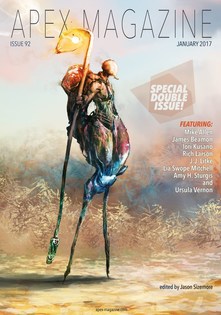 Sarena Ulibarri: The aesthetic of Apex Magazine has surely changed and evolved over the years and under different editors. What are some of the stories you feel best define the current Apex aesthetic? Lesley Conner: This is a fantastic question! And also a really hard one to answer because it isn’t as simple listing personal favorites. Apex Magazine is striving to publish stories that are dark and surreal, stories that push boundaries, that blend genres—or throw genre out the window entirely. We want real human emotions in fantastical worlds. Give us outrage, desperation, sorrow, and then twist it into something new and heart-wrenchingly beautiful. We want stories that introduce us to new worlds, that stretch our imaginations. None of these are things that are easily defined. But I will give it a shot! Stories I feel best define the current Apex aesthetic:
This is a pretty fair mix of stories. Different genres, different subject matter. Authors from different backgrounds. But all of these stories have something that says “Apex!” to me when I read them and I think they’d be a good place for new readers who wanted to sample what Apex is about. SU: What's the process a story goes through between the time it is accepted and the time it is published in the magazine? LC: We are looking for stories that are pretty close to being ready to publish when we buy them. We do a light copy editing and then a second pass proofreading, but that is basically it. Saying it that way, it sounds like we should be publishing a story the issue after it’s accepted, but that isn’t the case. We typically have several issues worth of content scheduled at one time. This means when we accept a story, it can be a while before we have the chance to publish it. Which is a good thing for us as a publication, because it allows us to select stories for an issue that fit together. Rather than simply publishing all the stories that we really liked—with no thought or consideration to theme, or pacing, or all the other things that make stories work together—having a cushion of already scheduled content gives us time to make sure we’re publishing a story in the correct issue with other pieces that will compliment it. SU: Jason is editor-in-chief and Lesley is managing editor—what's the difference in your roles? LC: Jason would tell you that I’m the one in charge and he just writes the checks. This isn’t true. I manage things. I know, I know, a really imaginative way to explain what a managing editor does—way to not really say anything, Lesley!—but it’s true. I make sure we have all the pieces we need for each issue: Have the stories been copy edited? Do we have author bios? Have I gotten the interviews back? What is the nonfiction for this month? Did we sell ads for the issue? I make sure that authors have been paid, our slush readers are getting through all the submissions in a timely manner, and handle queries from writers, artists, and readers. Jason does in fact send all the checks and payments, but he does much more than that. As editor-in-chief, he has the final say on what is going to be included in each issue of the magazine. He selects all the fiction, finds nonfiction, decides which authors we should interview and which story to podcast. He also builds the eBook editions of every issue. While I’m handling all the details, he has to deal with more big picture, long term issues that come with running a digital zine. Basically, Jason makes all the decisions and I organize the shit out of everything! SU: Apex Magazine always has fantastic cover art. How do you decide what image will grace each new issue? LC: Thank you! I love hearing that people enjoy our covers! Finding cover art is one of my favorite Apex tasks. We don’t try to fit specific artwork with certain issues/stories; I’m more thinking in terms of the other artwork we already have scheduled. I want to make that I’m not focusing too much on a particular color palette or a similar focal point in the image. The last thing that I want is for our covers to become predictable. So it’s a balance of finding artwork that fits the aesthetic Apex desires, while at the same time making sure that view doesn’t become stale. Lesley Conner is a writer/editor, managing editor of Apex Publications and Apex Magazine, and a Girl Scout leader. When she isn’t handling her editorial or Girl Scout leader responsibilities, she’s researching fascinating historical figures, rare demons, and new ways to dispose of bodies, interweaving the three into strange and horrifying tales. Her short fiction can be found in Mountain Dead, Dark Tales of Terror, A Hacked-Up Holiday Massacre, as well as other places. Her first novel The Weight of Chains was published by Sinister Grin Press in September, 2015. Best of Apex Magazine: Volume 1 marks her debut experience in anthology editing. She lives in Maryland with her husband and two daughters, and is currently working on a new novel. To find out all her secrets, you can follow her on Twitter at @LesleyConner. Support Apex Magazine's Revive the Drive 2017! Get awesome rewards and support great short fiction.
First of all, there is no one more horrified by that blog title than the editors and authors at the small press I run. They may well organize a mutiny as soon as this is posted. So aim your vitriol at me, not at World Weaver Press. Most of our books do employ the good ol' Oxford comma.
Second, the Oxford comma is often a Band-Aid that covers up other structural problems within a sentence. Just... hear me out, okay? Ever since the Oxford Style Guide dropped the serial comma in 2011, there have been entertaining memes floating around the internet "proving" you need the Oxford comma to avoid ridiculous confusion. Here are two of the most common examples:
The argument here is that without the Oxford comma, the second and third items in this list can be mistaken for a descriptive clause of the first. But consider this: what actually creates the confusion in both of these sentences is the position of a plural noun followed by two singular nouns. Rearrange the sentence so the plural isn't first, and suddenly it doesn't matter whether that comma is there or not.
We invited JFK, the strippers and Stalin. We invited JFK, Stalin and the strippers. To Ayn Rand, God and my parents. To Ayn Rand, my parents and God. But not all Oxford comma usage can be solved with that One Weird Trick. Here's a different Oxford comma meme, with a different issue.
Ah, my good friend the direct address comma, made famous with the "Let's eat Grandma" vs. "Let's eat, Grandma" example. Sure, lack of an Oxford comma can create the impression the speaker is addressing the people (or objects) that appear after the first comma. Except, maybe a little context and common sense is necessary? Is it likely, from the context of the sentence, that the person is actually talking to a sentient toast-and-juice monster? I mean, I work in the field of fantasy and science fiction, so it's certainly possible. However, if the speaker of this sentence is addressing a literal toast-and-juice monster, that better be established and described in the narrative leading up to this sentence. Also, the writer should probably come up with a better and more creative name for it than "toast and orange juice." At the very least, it should be capitalized. "I had eggs, Toast and Orange Juice" would signal that "Toast and Orange Juice" is a proper noun.
If it is clear from context that the speaker is not addressing sentient toast and orange juice, does the Oxford comma make this a better sentence? The truth is, with or without the comma, it's just a lazy sentence. "Had" is a weak and vague verb—it merely tells us the food existed and was in your possession. Revise it to something like "I devoured the eggs and toast, and drank three glasses of orange juice," or "I picked at the eggs and toast, and only drank half of the orange juice," and not only are the verbs more active, but we also know a lot more about what's going on. Little ol' "had" could have meant either of these scenarios, but there was no way to tell which. The Oxford comma can't fix that. How about this one?
Let's assume this sentence does not appear in a Haralambi Markov horror story. Obviously, you need a comma after "cooking." But what about that sneaky Oxford—does a second comma actually clarify the meaning? Here it is without: "I like cooking, my family and pets." Here it is with: "I like cooking, my family, and pets." I suppose it does eliminate the impression of a direct address comma: the speaker telling their family and pets that they like cooking (which would need to be rewritten anyway because it would sound stilted and awkward). As with the previous example, context can probably eliminate that possibility better than a comma can.
The real confusion for me in this sentence is whether the speaker likes "pets" in general, or their own pets. Change it to "I like cooking, my family and my pets" and the meaning is more obvious. Better yet, rearrange it to "I like my family, my pets and cooking," and there's suddenly a lot less room for misinterpretation, with or without an Oxford comma. Okay, okay, enough of these silly meme examples. Here's one from real life.

I used parentheses and a plus sign in that tweet because this is what I wrote first:
"Win a paperback copy of COVALENT BONDS, an anthology of geek romance, and a serotonin necklace." Is the winner being promised three things or two? It's unclear whether "an anthology of geek romance" is a descriptive clause for "COVALENT BONDS" or a separate object. The commas create ambiguity that can't be fixed by rearranging the sentence or adding or subtracting commas. Different punctuation must be used. If, however, the Oxford comma were not in common usage, my original sentence would have been clear. Look, there may very well be times when the Oxford comma is absolutely necessary. As entertaining as a lot of these examples and memes are, I remain unconvinced. I'm not here to take your Oxford commas from you, though. Keep using them, if you like them. Maybe the sentence just looks wrong to you without it. Fine! It's a style choice, after all, not a grammar rule. But each time you use an Oxford comma, consider: Do you need it? Do you really need it, or can you write a better sentence? My company, World Weaver Press, is participating in Small Press Week, an initiative helmed by Upper Rubber Boot Books to promote small press publishing. However, it's release day for HE SEES YOU WHEN HE'S CREEPIN': TALES OF KRAMPUS, so I'm bringing today's Small Press Week post over to my personal blog because I want to stay on Krampus's good side and let him have the spotlight. The topic for today says this: "Every Tuesday is #newreleasetuesday, but this Tuesday is for featuring all of your 2016 releases, no matter when their release date." One mistake small presses sometimes make is they forget to be small. When you have an operation run by only a few people, it can be easy to get overwhelmed. Originally, World Weaver Press was planning to release 16 titles in 2016. What we managed was 9 titles (plus one upcoming relaunch), and to be honest, I'm exhausted. It may not seem like a lot, but there are so many details that go into publication that it really adds up. (See our Small Press Week: Secrets post and my post on editing anthologies for more insight into what goes on behind the scenes in a small press.) I haven't always been able to give these books the attention and publicity I wish they could have, but I've always given them the best I could, and I'm so proud of what we've brought into the world this year. Beside each book, you'll find an excerpt. These excerpts are different from the ones available on the World Weaver Press website, so please give them a read. Maybe you'll even find a new favorite or a good holiday gift. Campaign 2100: Game of Scorpions by Larry Hodges A third party, and an alien, take on a corrupt world government.
Char by Kristina Wojtaszek An isolated fae must travel a century into the past to rewrite the book that will save her people.
Omega Rising by Anna Kyle Cass Nolan has been forced to avoid the burn of human touch for her whole life, until a sexy ranch hand changes everything.
Bite Somebody by Sara Dobie Bauer Celia thought becoming a vampire would make her perfect, but she's just as awkward as before, only now she has a craving for blood and a crush on her tasty neighbor.
Sirens, edited by Rhonda Parrish An anthology of fantasy and science fiction: 16 siren songs that will exemplify and defy your expectations.
Speculative Story Bites, edited by Sarena Ulibarri Fifteen bite-sized stories, offering a sampler platter of fantasy, science fiction, and paranormal horror.
Murder in the Generative Kitchen by Meg Pontecorvo Does your high-tech kitchen know you better than you know yourself?
The Meddlers of Moonshine by A.E. Decker Something is rotten in the town of Widget, and Rags-n-Bones knows it's all his fault. (Moonfall Mayhem #2)
He Sees You When He's Creepin': Tales of Krampus, edited by Kate Wolford Whether you want a dash of horror or a hint of joy and redemption, these 12 new tales of Krampus will help you gear up for the most “wonderful” time of the year.
Thank you for checking out all the books World Weaver Press published in 2016! Check the WWP blog for more of our Small Press Week posts, and follow the hashtag #SPWeek16 on Twitter to find more great small presses.
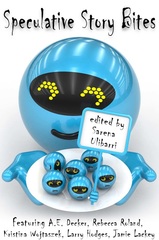
Today is release day for my anthology Speculative Story Bites, and I'm fully aware that most of the people in my life have no idea what I actually do as an editor and publisher. My colleague and friend Rhonda Parrish also wrote a great blog on this topic, answering the question, “So like, you just fix all the typos and then you get to have your name on the cover?”
The short answer: no, that's not what an anthology editor does at all. First of all, this particular anthology is a bit of an oddball. Before I took over as editor-in-chief of World Weaver Press, I was reading submissions for another anthology we were supposed to publish. It was, however, to be the third in a series of anthologies, and when the plug got pulled on the second in that series, I couldn't exactly go ahead with publishing the third. Speculative Story Bites contains several stories I salvaged from that submissions period, several I salvaged from the other cancelled project, and several that I solicited directly from World Weaver Press authors. It's a bit of a mish-mash of stories, but I adore each and every one of them, and I hope readers will find at least a few they love. Most anthologies don't have that kind of complicated background, but this one is pretty special to me because it does. So what does an anthology editor do? Without going into too much technical detail, here are the basic steps that an editor and/or publisher has to go through to bring an anthology to your bookshelf or Kindle. 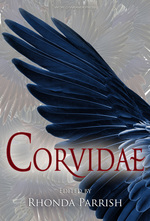
Conceive a Theme or Angle
Since an anthology is a collection of short stories by various authors, it is usually centered around a theme. That theme may be broad—the theme of Speculative Story Bites is "speculative fiction under 4000 words"—or it may be narrow-- for example, Rhonda Parrish's anthology Corvidae is focused on fantasy stories about crows, magpies, and other "corvid" birds, and Kate Wolford's anthology Frozen Fairy Tales is all about fairy tale retellings set in winter. At this point, the editor and publisher must also decide on guidelines for writers, including how long or short a story can be, what genres are acceptable, and how much writers will be paid. Solicit Stories or Open for Submissions Soliciting means approaching authors individually to ask if they are willing to contribute a story. Opening to public submissions requires posting the guidelines to market websites such as Duotrope and Submission Grinder, sharing the call for submissions on social media, passing around handbills at conventions, hanging flyers in hipster coffee shops, or however else you plan to reach writers. Read Slush and Send Rejections or Acceptances "Slush" refers to the stories from a public open submission period. For the anthology that Speculative Story Bites was originally supposed to be, we received nearly 350 submissions. Some, I only read the first few paragraphs and could tell they were either not well-crafted, or not right for my vision. Others, I had to read multiple times to decide. Most stories received a copy-and-pasted form rejection, but some received personalized feedback about why they were not accepted. Narrow Down the Shortlist Once I picked the stories that were well-crafted and fit my vision, then came the gut-wrenching decisions about which ones to actually include. Maybe some are too similar to each other, maybe one just didn't fit as well as I thought, maybe another wasn't as memorable. These are the rejections I really hate to send. Usually at World Weaver Press, we seek a second opinion from another editor to help with this stage. For Speculative Story Bites, I had help from assistant editor Laura Harvey, as well as then-intern Rae Oestreich. Issue Contracts and Payments Payment terms should already be included in the submission guidelines, so writers know what to expect, but there are important details that need to be agreed upon about when payment will be issued, as well as what rights the publisher has to the story and for how long. Edit the Stories There are three stage of editing: 1) Developmental Editing: "This plot point doesn't make sense." 2) Line Editing: "This sentence doesn't make sense." 3) Copy Editing: "This comma shouldn't be here." The way I prefer to do it, the primary editor for a book does the first two, and someone else (another editor or an intern) does the third. That means the very thing that most people associate with "editing" is not even the responsibility of the editor whose name is on the cover of an anthology. Arrange the Stories There's an art to deciding which story goes first or last in an anthology, and how to order them throughout for balance and emotional impact. Format the Book Often, this responsibility falls to the publisher rather than the editor, but since I'm both for this anthology, it's all on me. Formatting an ebook uses HTML markup language, and looks something like this inside:
Speculative Story Bites will not be available in paperback, but for anthologies that are, it requires a separate document designed according to the printer's specifications. Here, we get to have tons of fun with headers, section breaks, margins, kerning, leading, gutters, and various other typographical details that most people don't even realize exist.
Create Cover Art Again, this is not usually the editor's responsibility, but the editor may at least have to contribute ideas or feedback on cover options. I made the silly little cover for Speculative Story Bites myself, and it was much simpler than the covers I made for Campaign 2100, Char, and Murder in the Generative Kitchen, largely because it is ebook only. Creating a full-wrap cover for a paperback is much more complicated. (We don't even mess with hardbacks...) Upload to Bookselling Venues Our books are sold at Amazon, BarnesandNoble.com, Kobo, and sometimes iTunes and Omnilit. Each one has slightly different requirements and systems. iTunes, for example, won't accept any file that includes Amazon links. Omnilit needs the cover to be a certain number of pixels. Amazon requires a different file format than all the others. Aside from just uploading the file and hitting "publish," this stage also requires selecting appropriate keywords and categories, and making sure the book description and author names all show up correctly. Market the Book Once you've created an anthology, you still have to convince people to read it. This involves some combination of sending copies to review outlets, bloggers, and street teams, hosting giveaways, sending out email newsletters, attending conventions, participating in blog tours, social media posting, paid advertising (preferably with effective venues such as Bookbub or EReaderNewsToday), and various other types of voodoo. I hope this has provided some insight into how an anthology gets put together, and why an editor or anthologist may give you a death glare if you assume it's all about typos, Have questions? Leave a comment!
|
Archives
January 2024
Categories
All
|

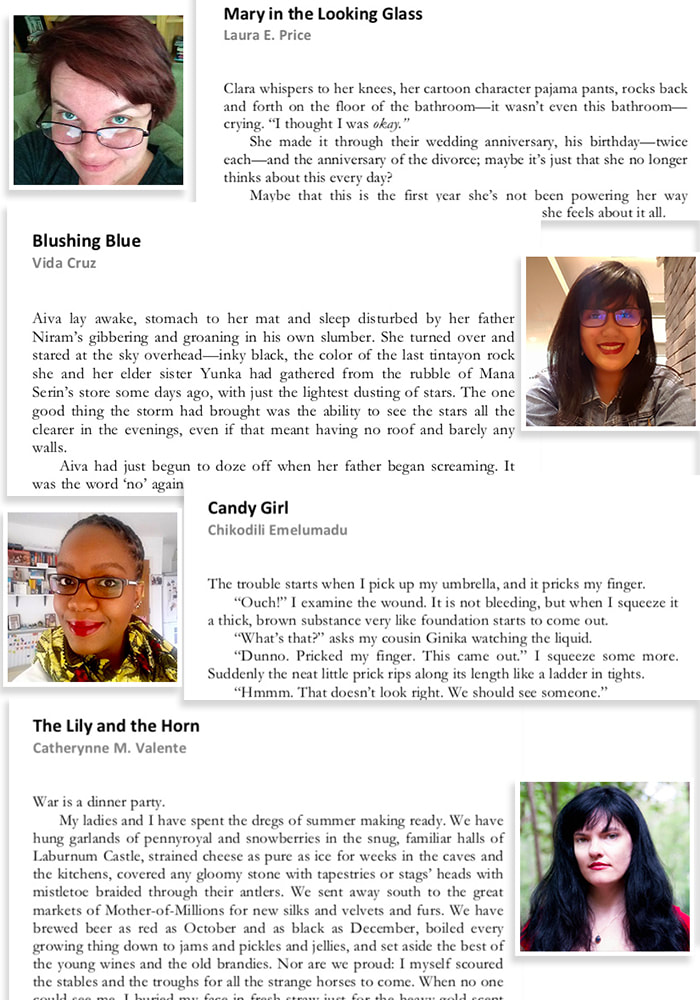

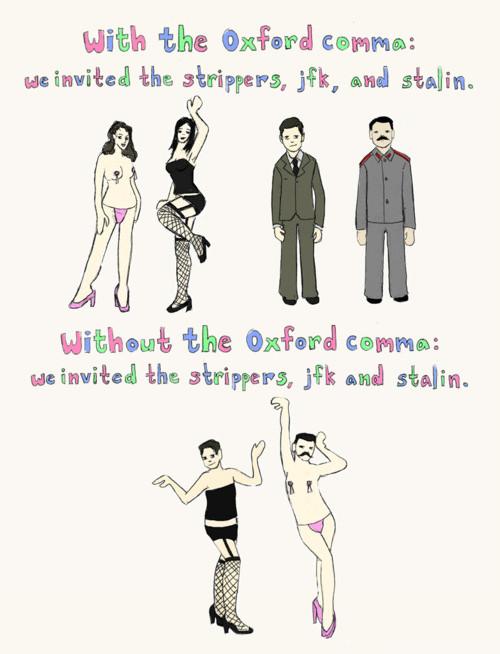

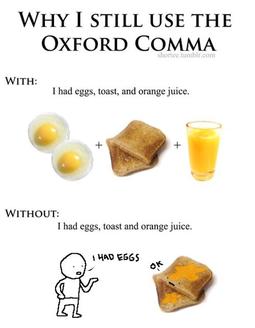

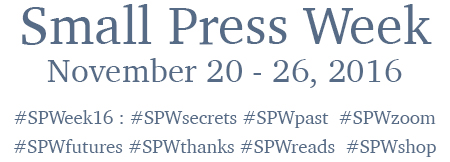
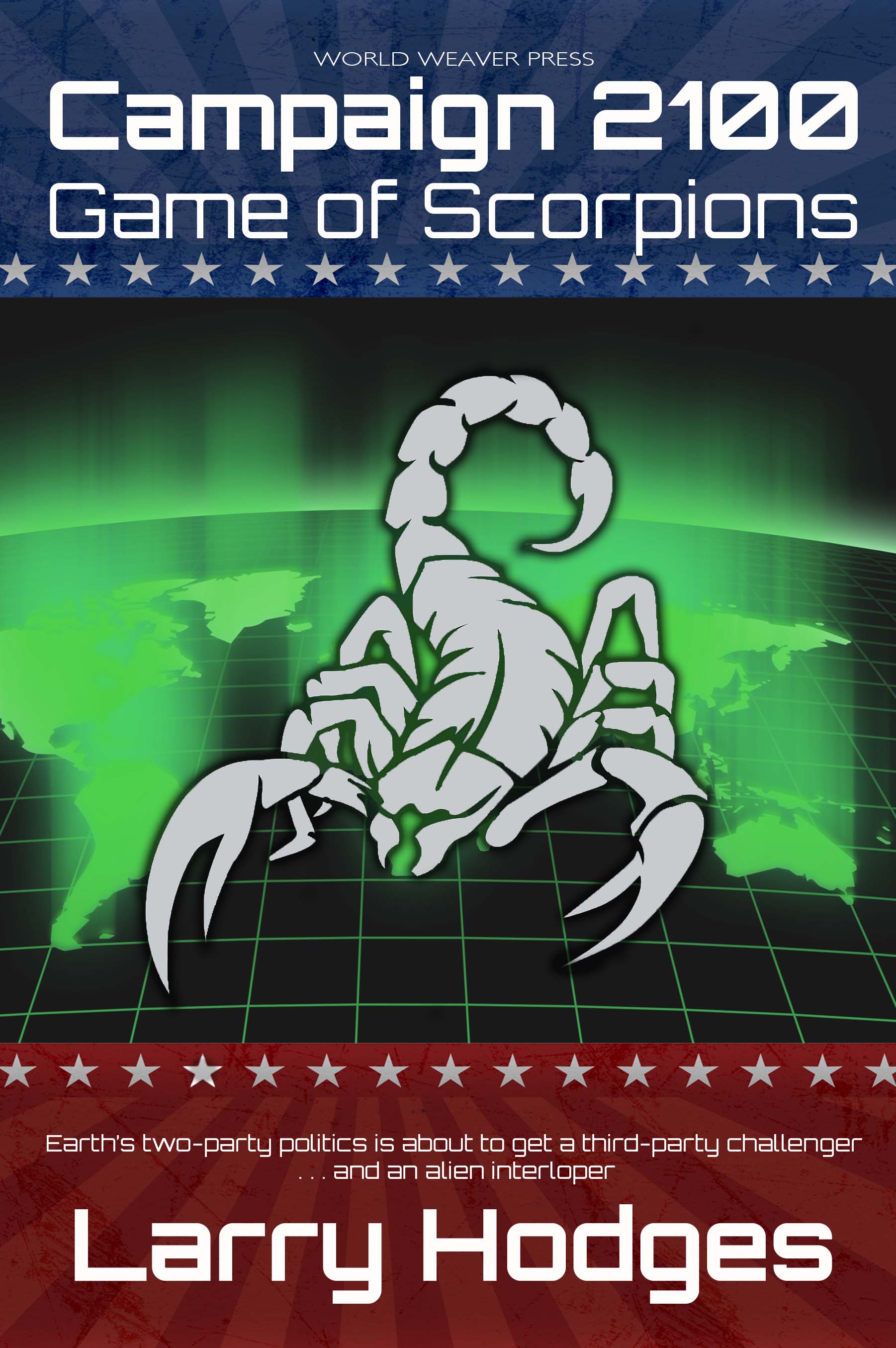
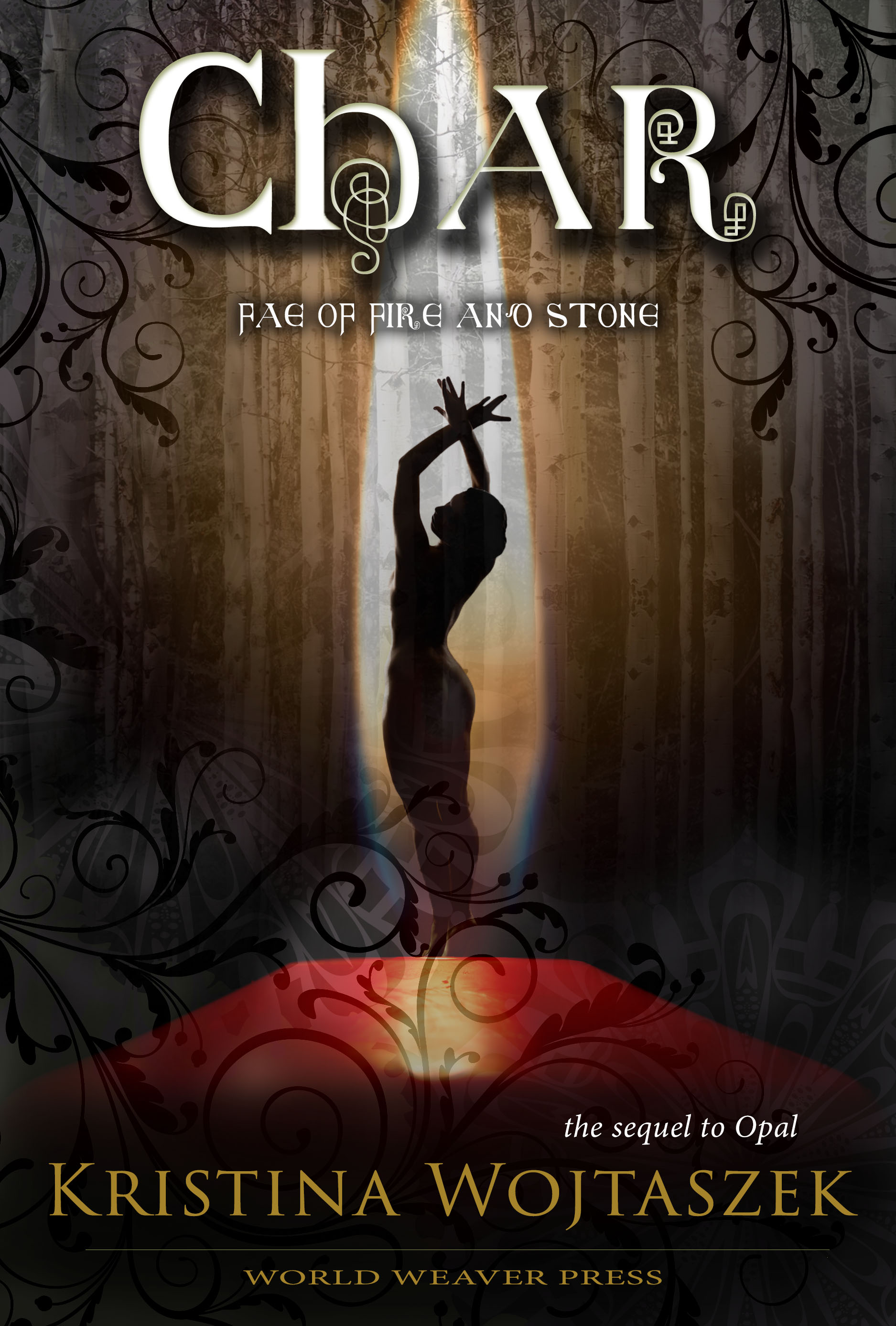
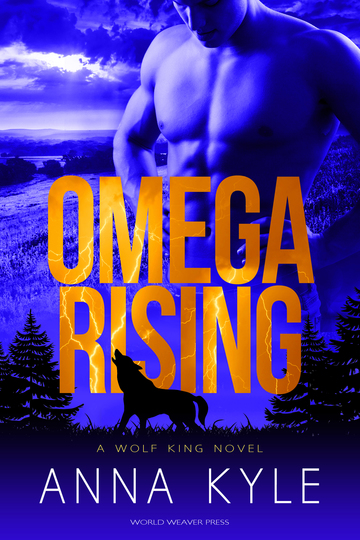
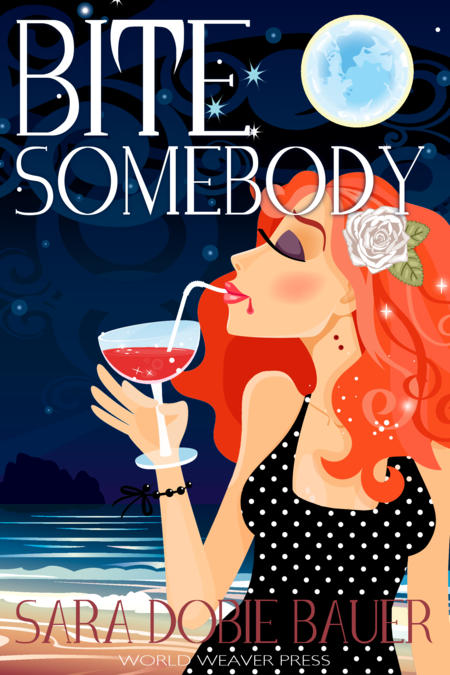
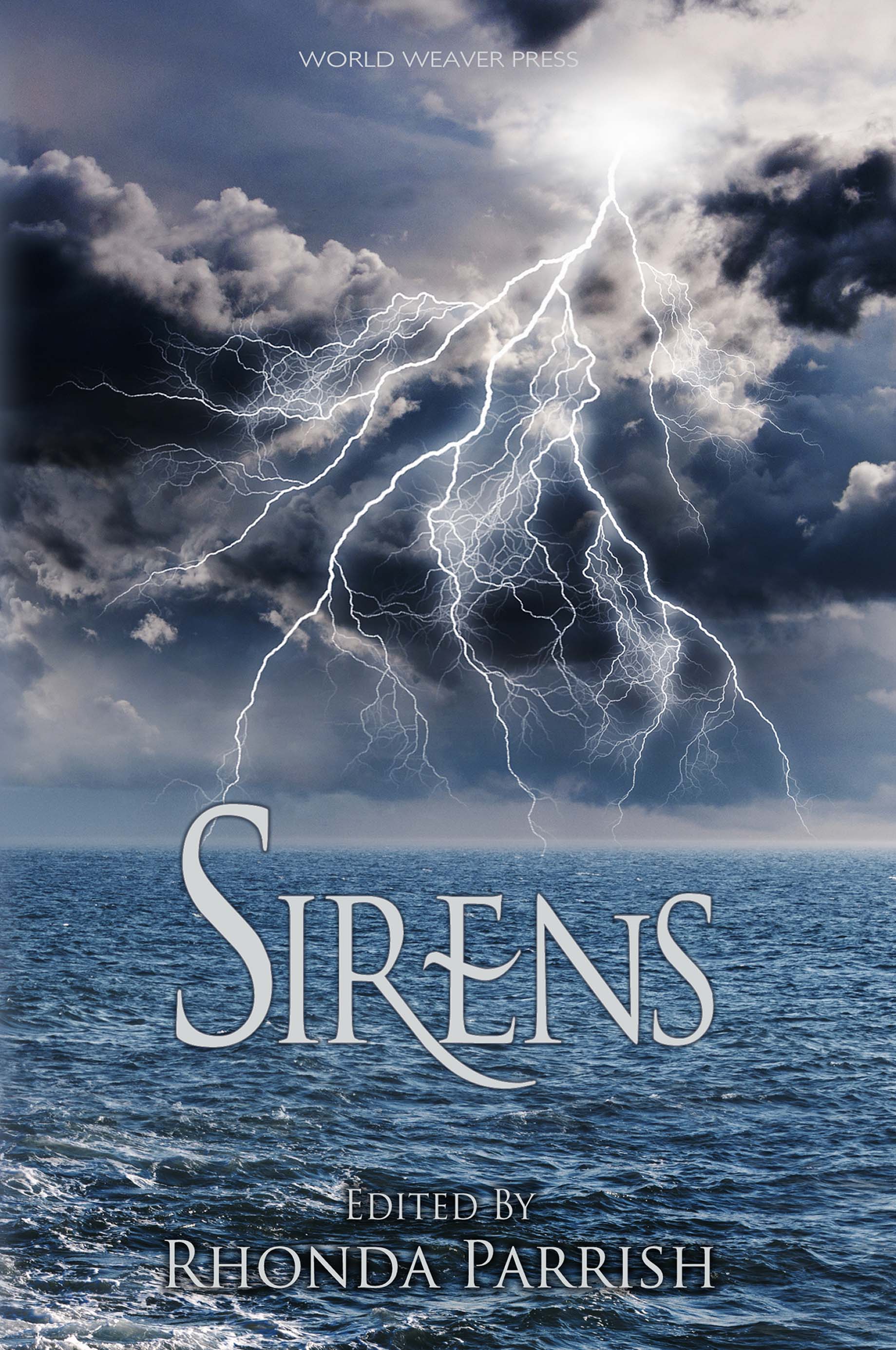
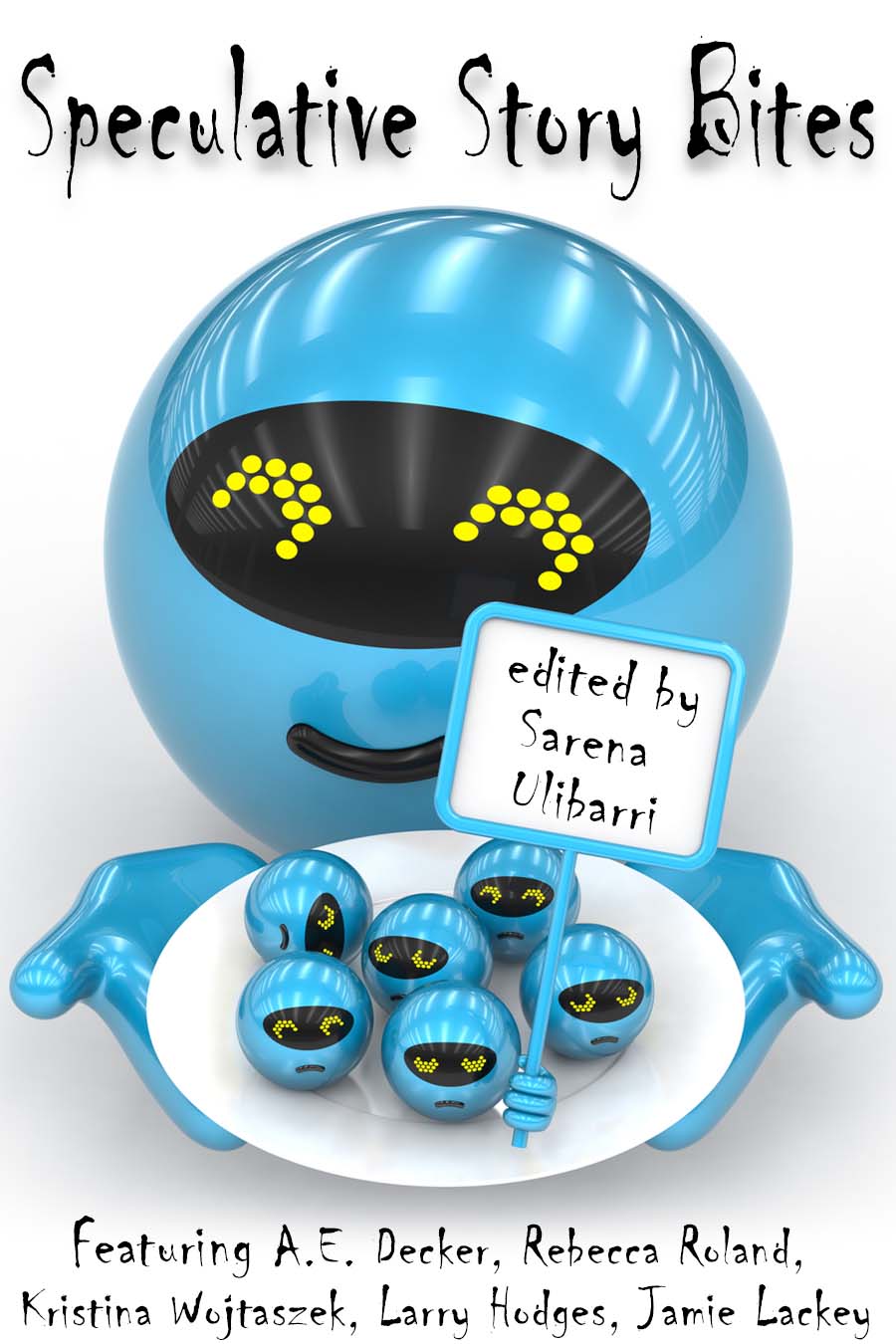
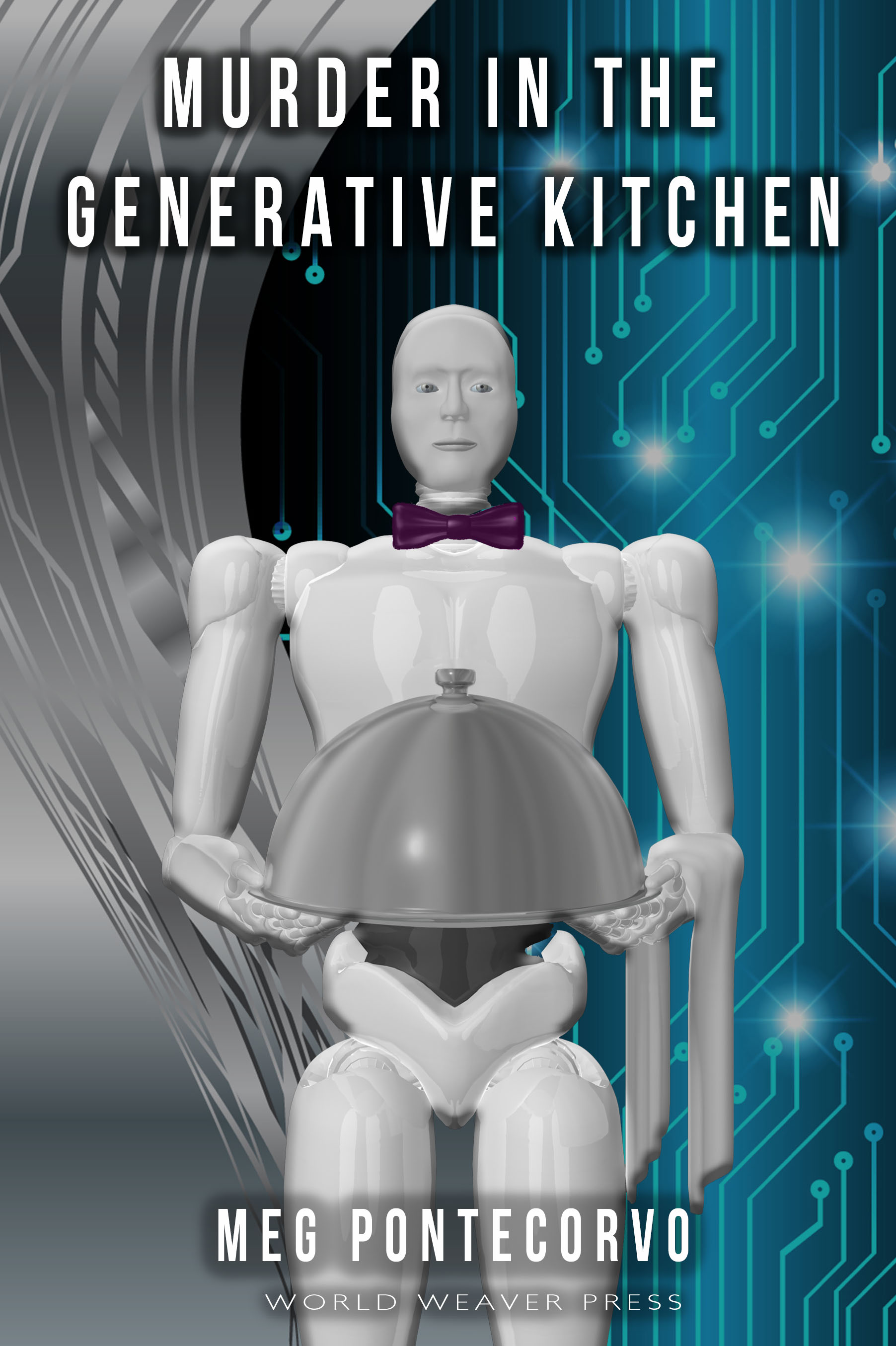
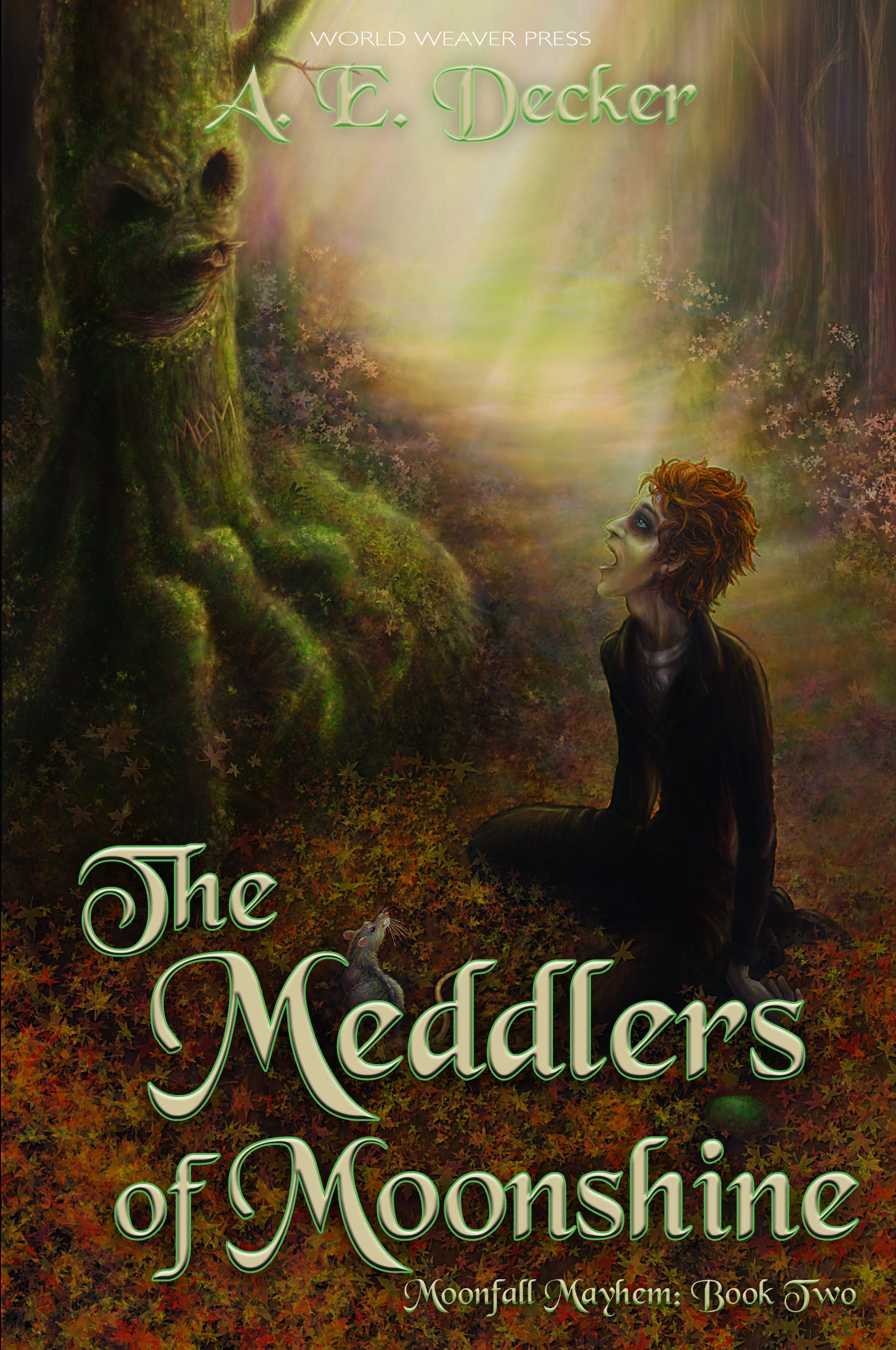
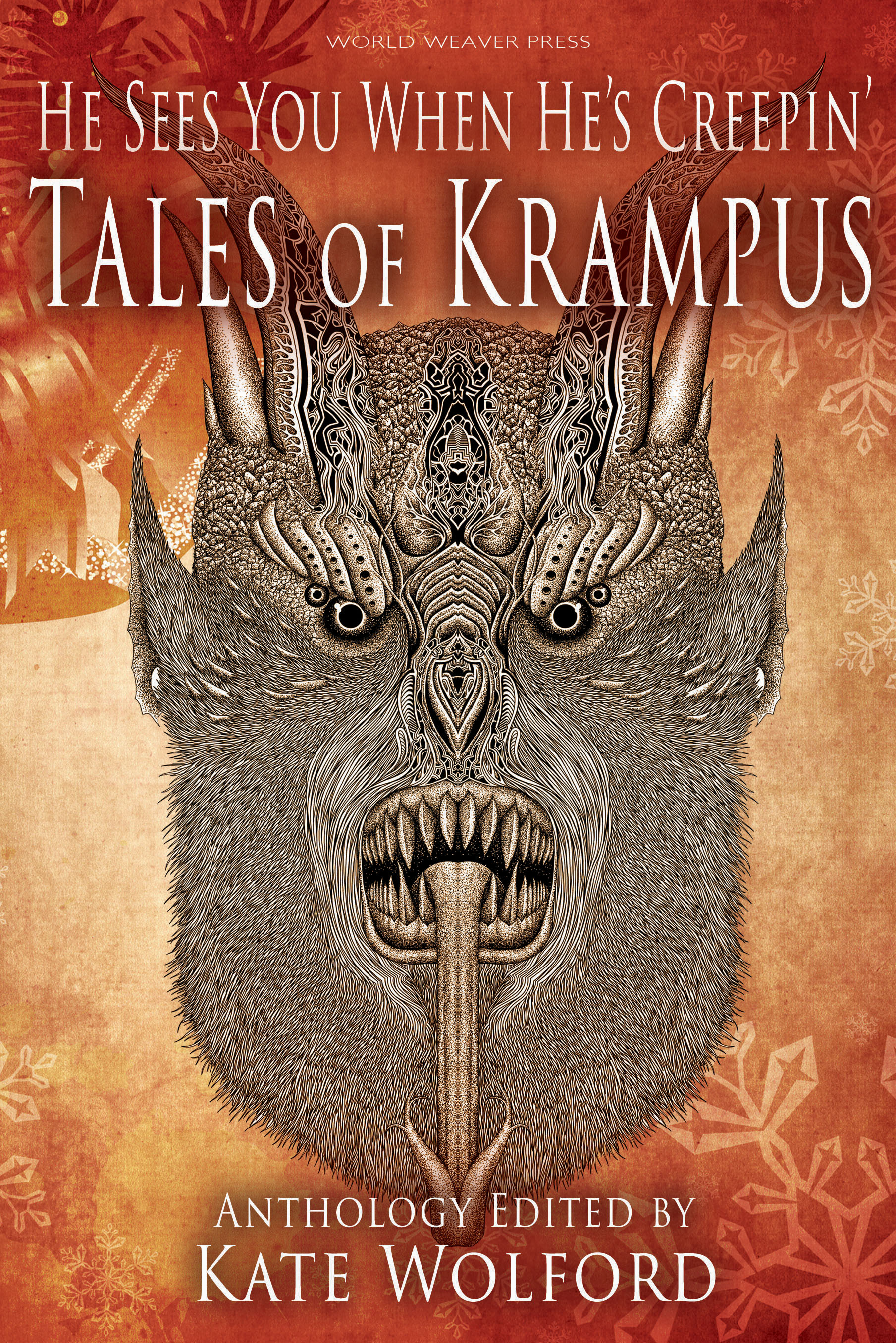

 RSS Feed
RSS Feed